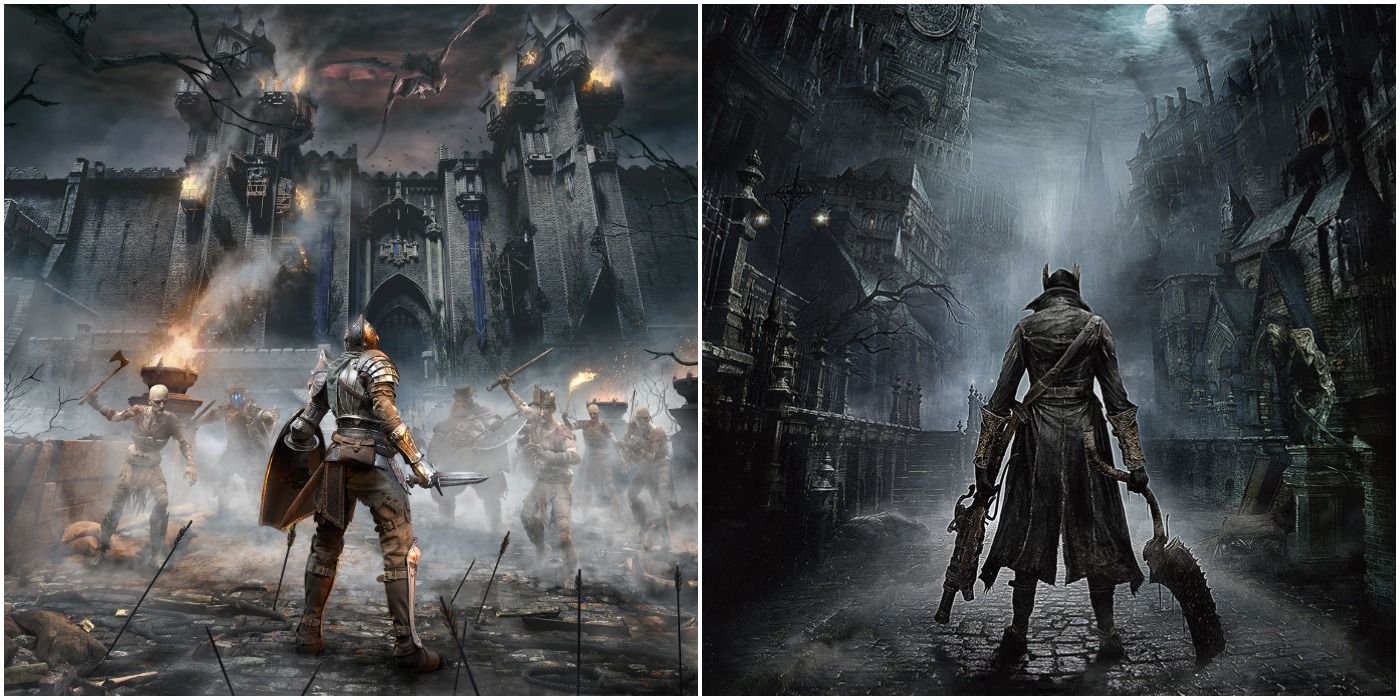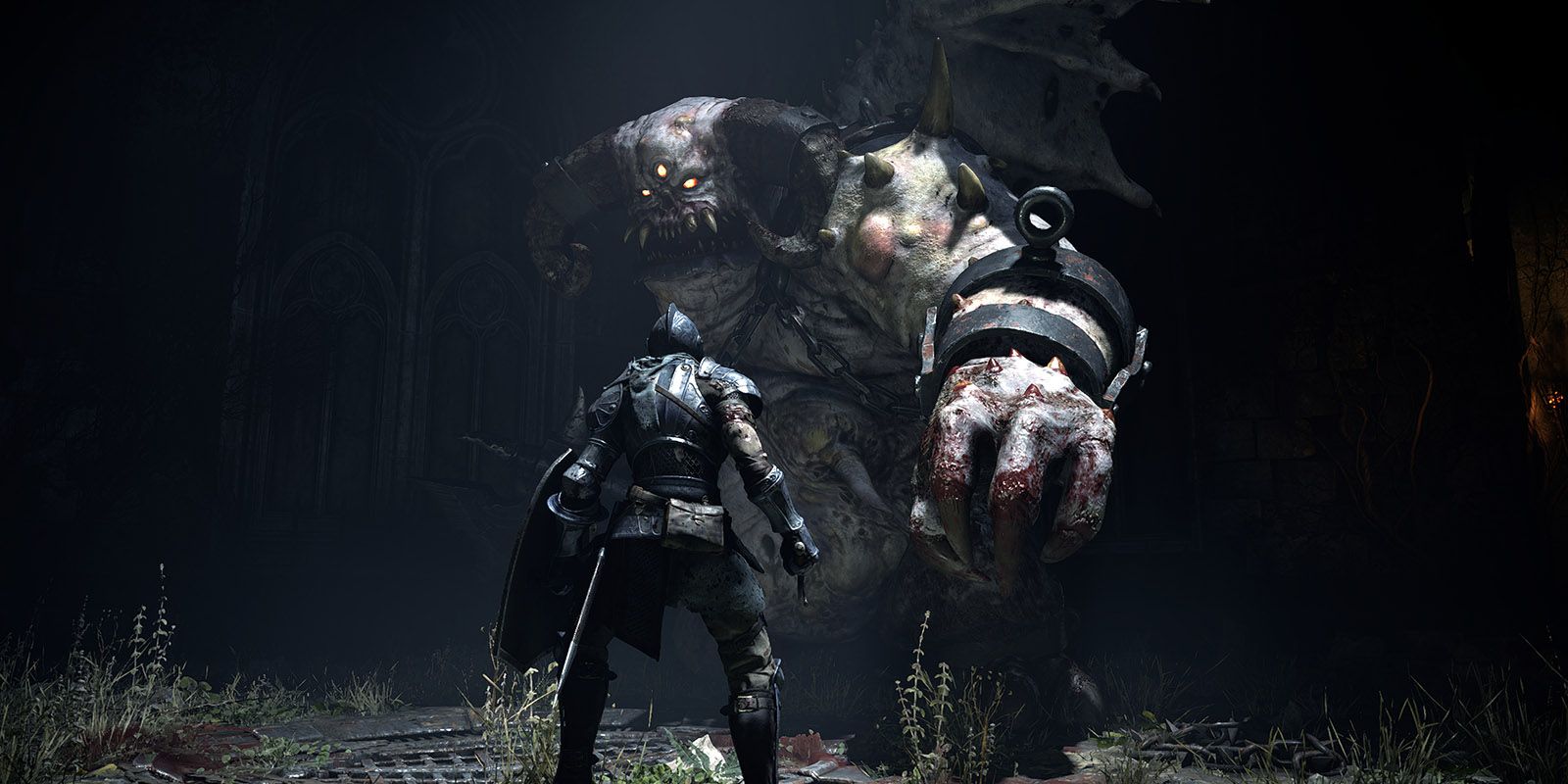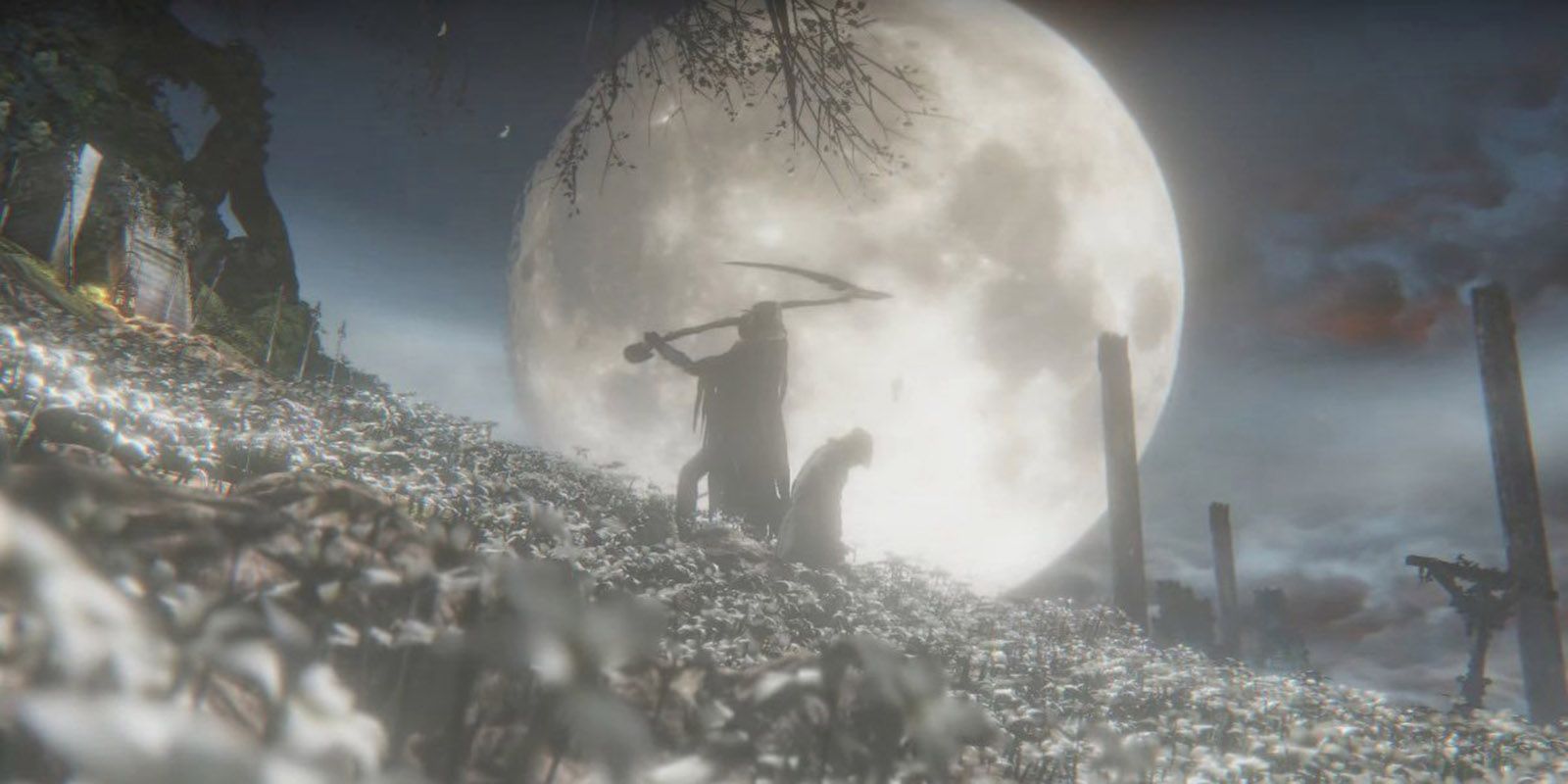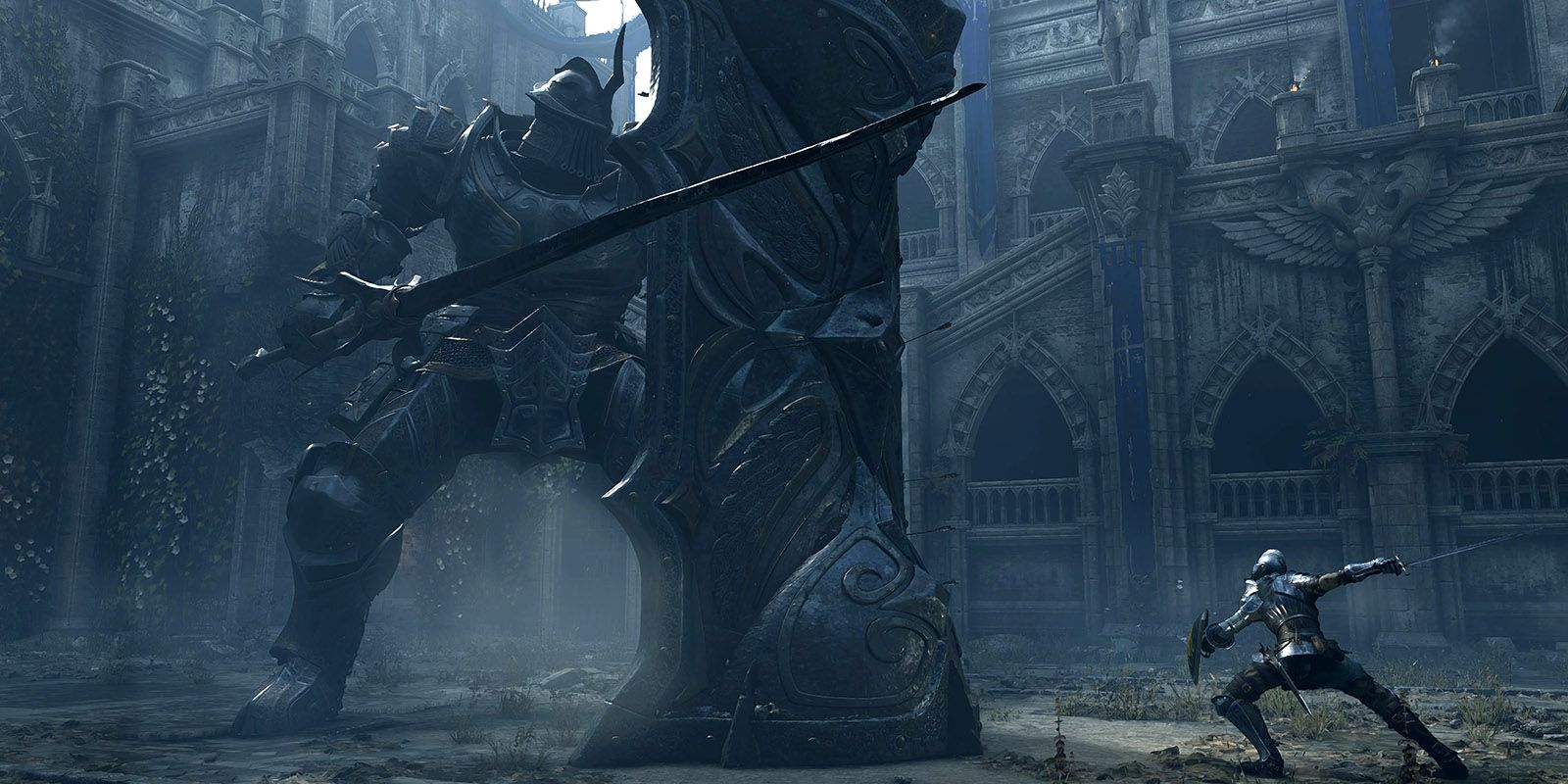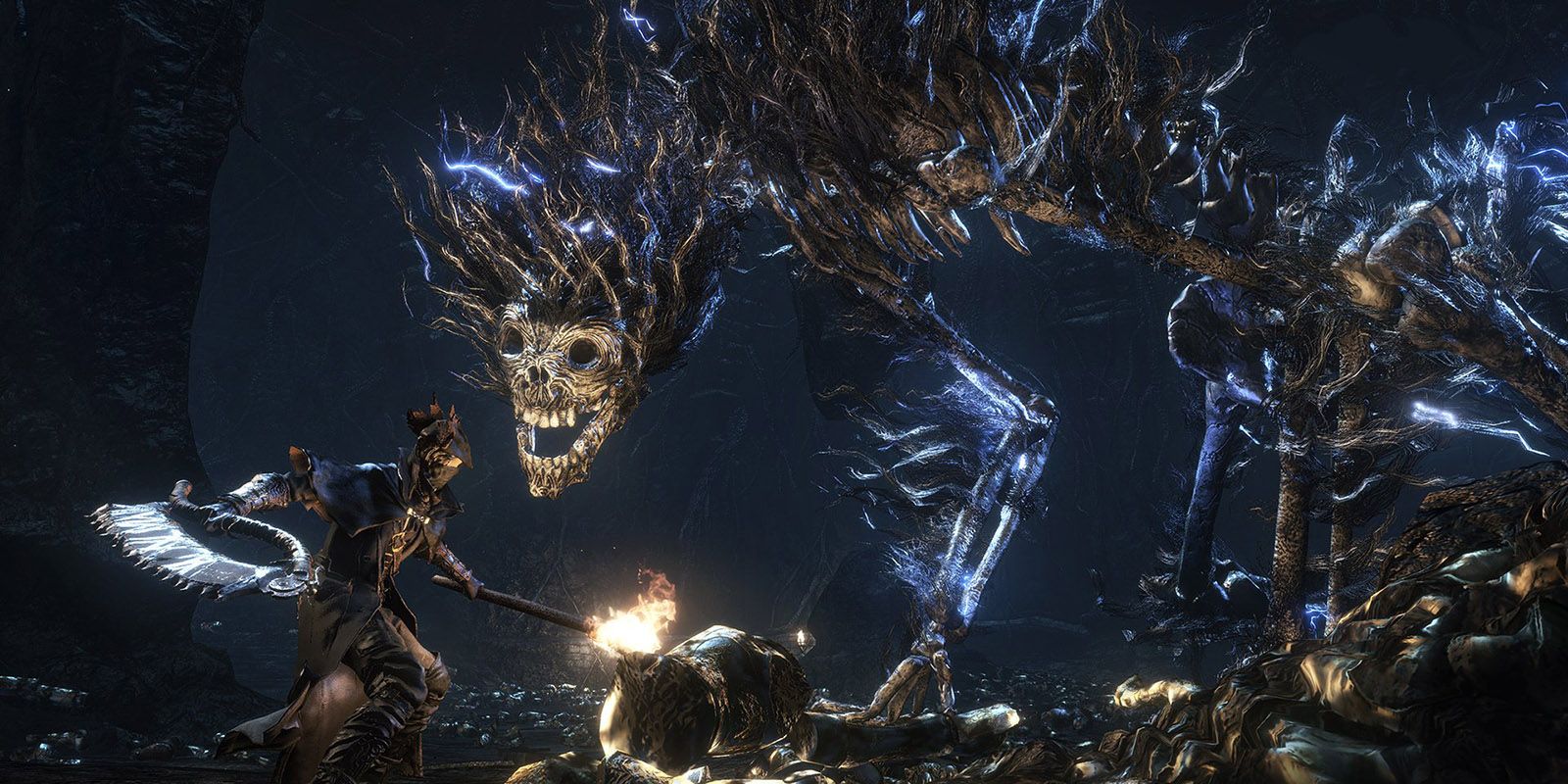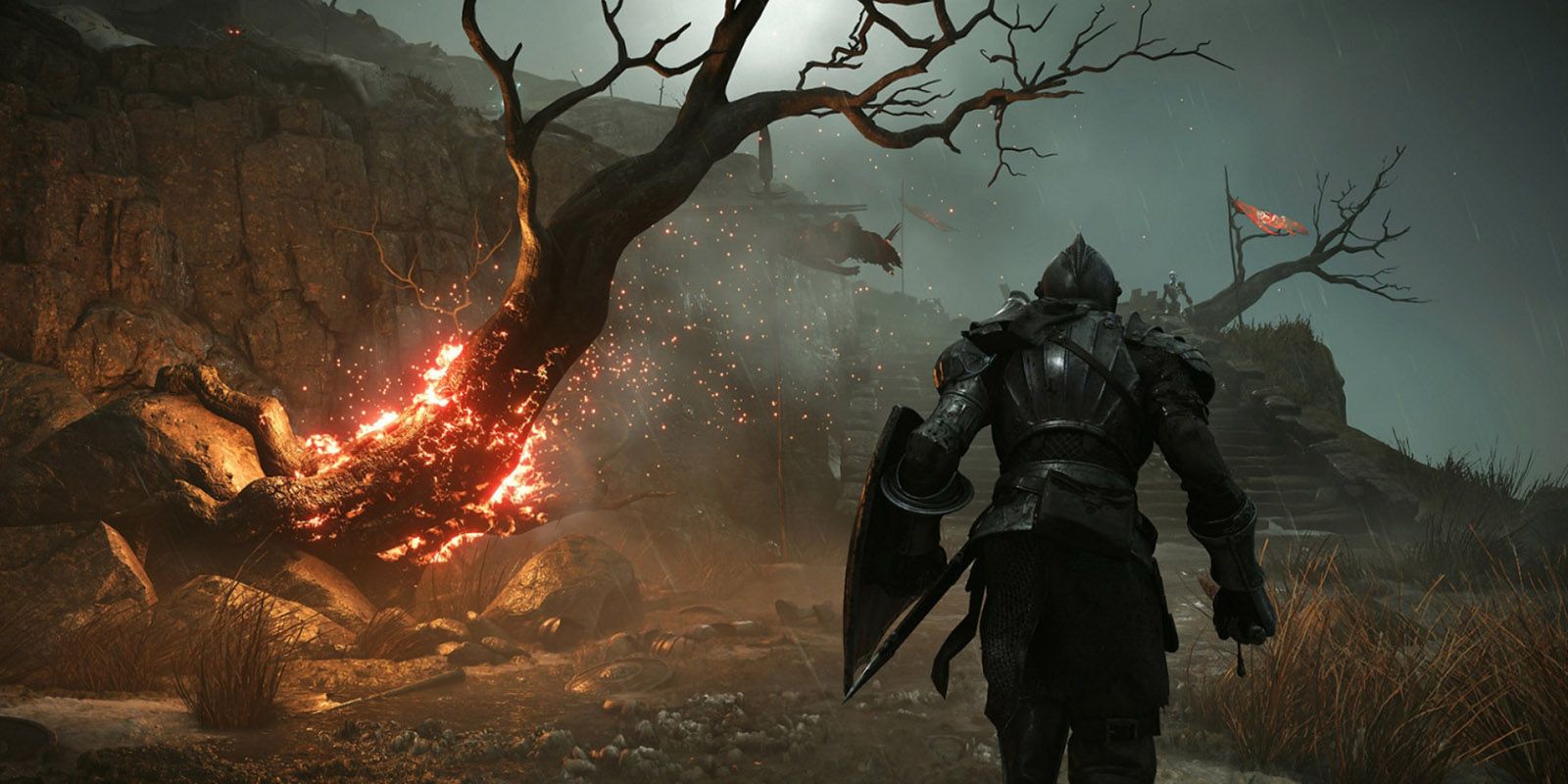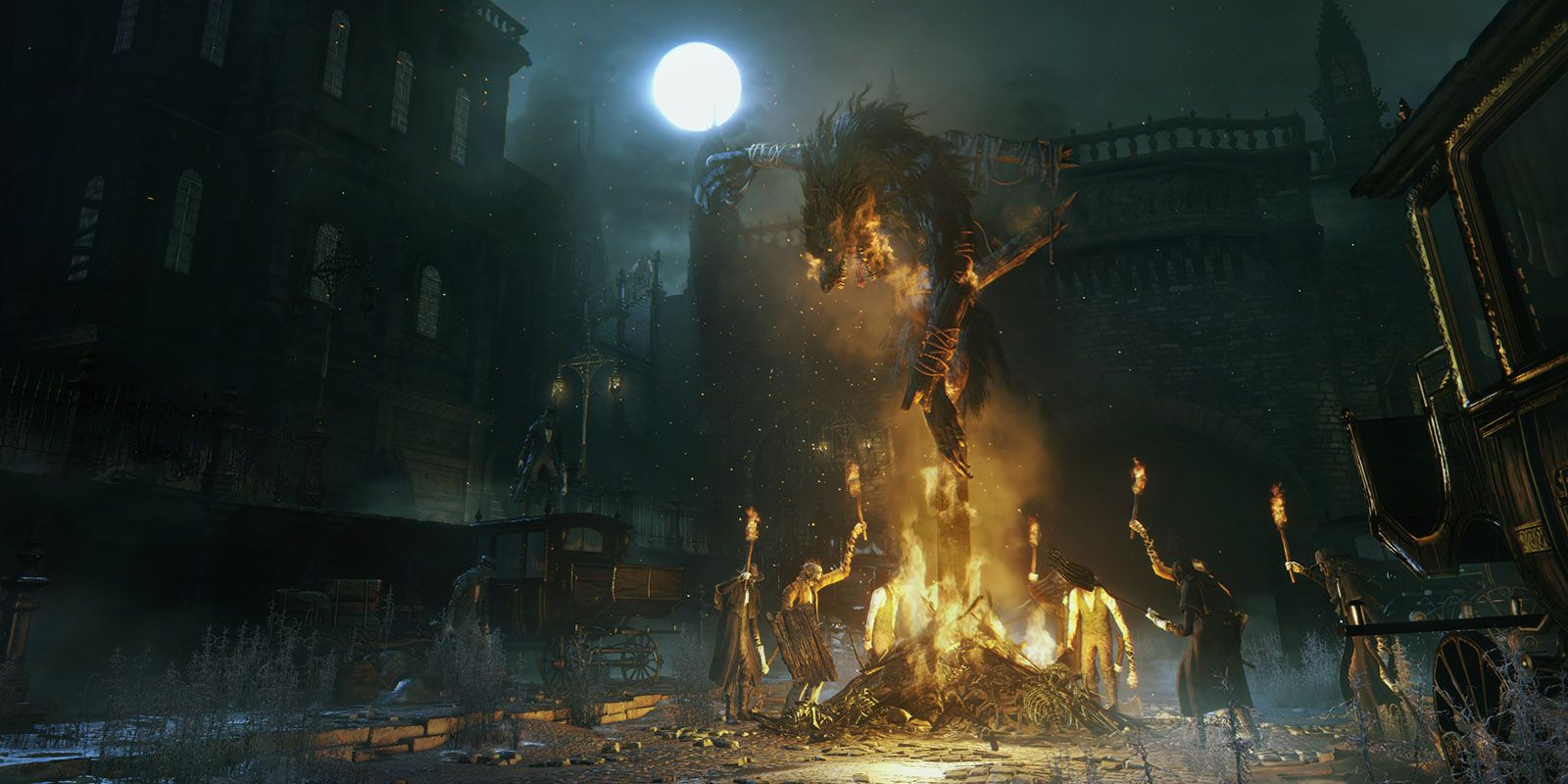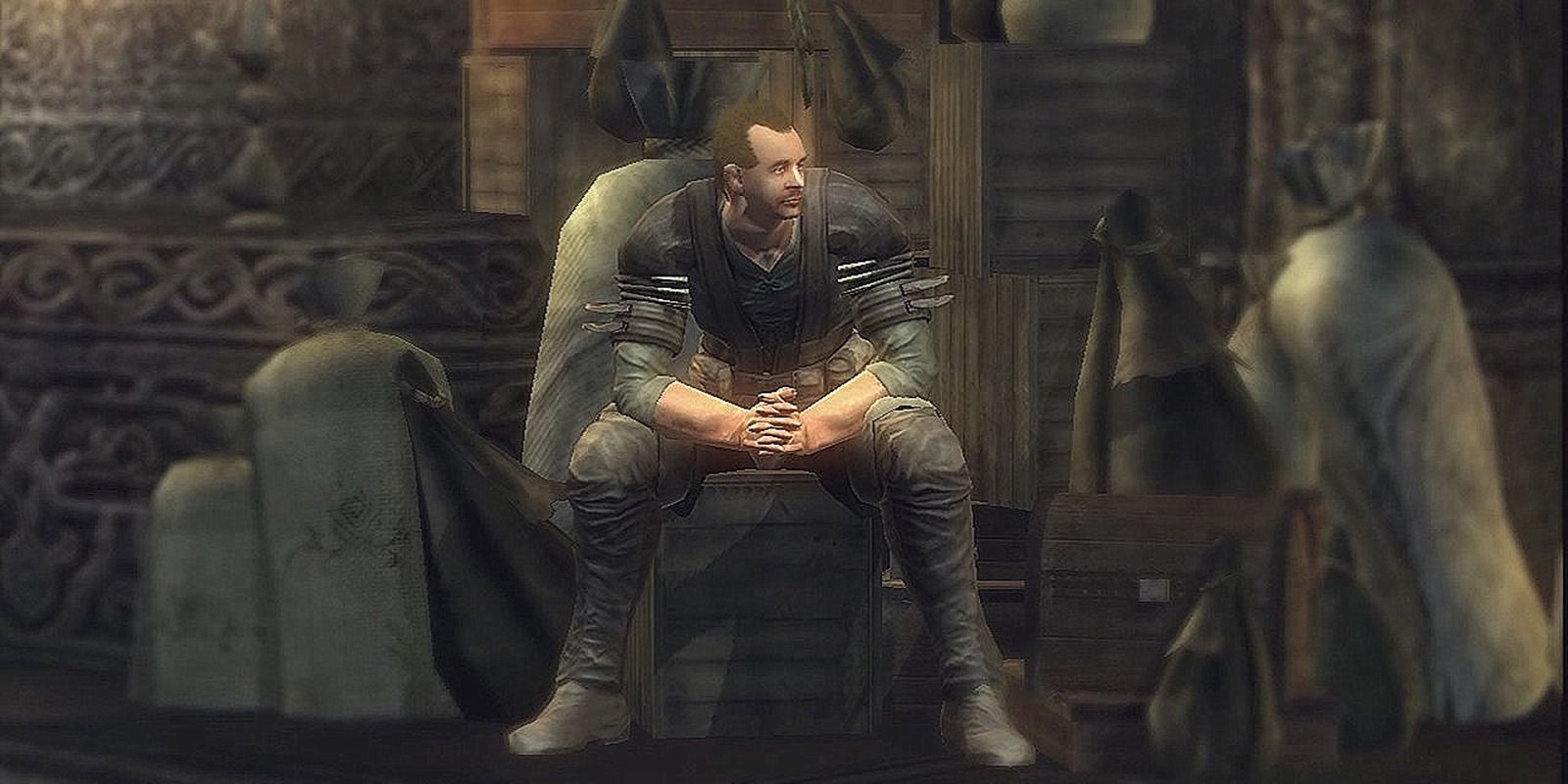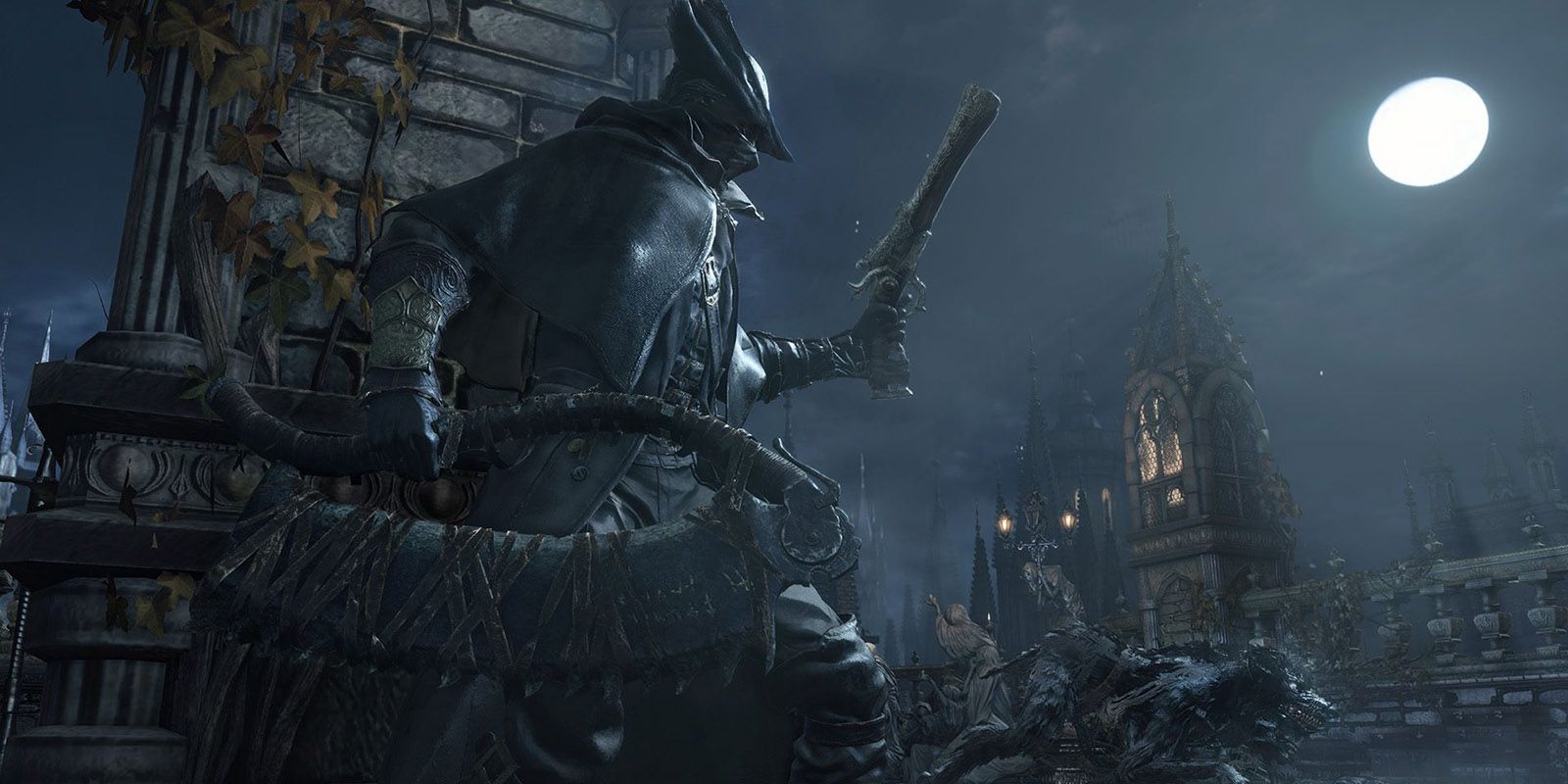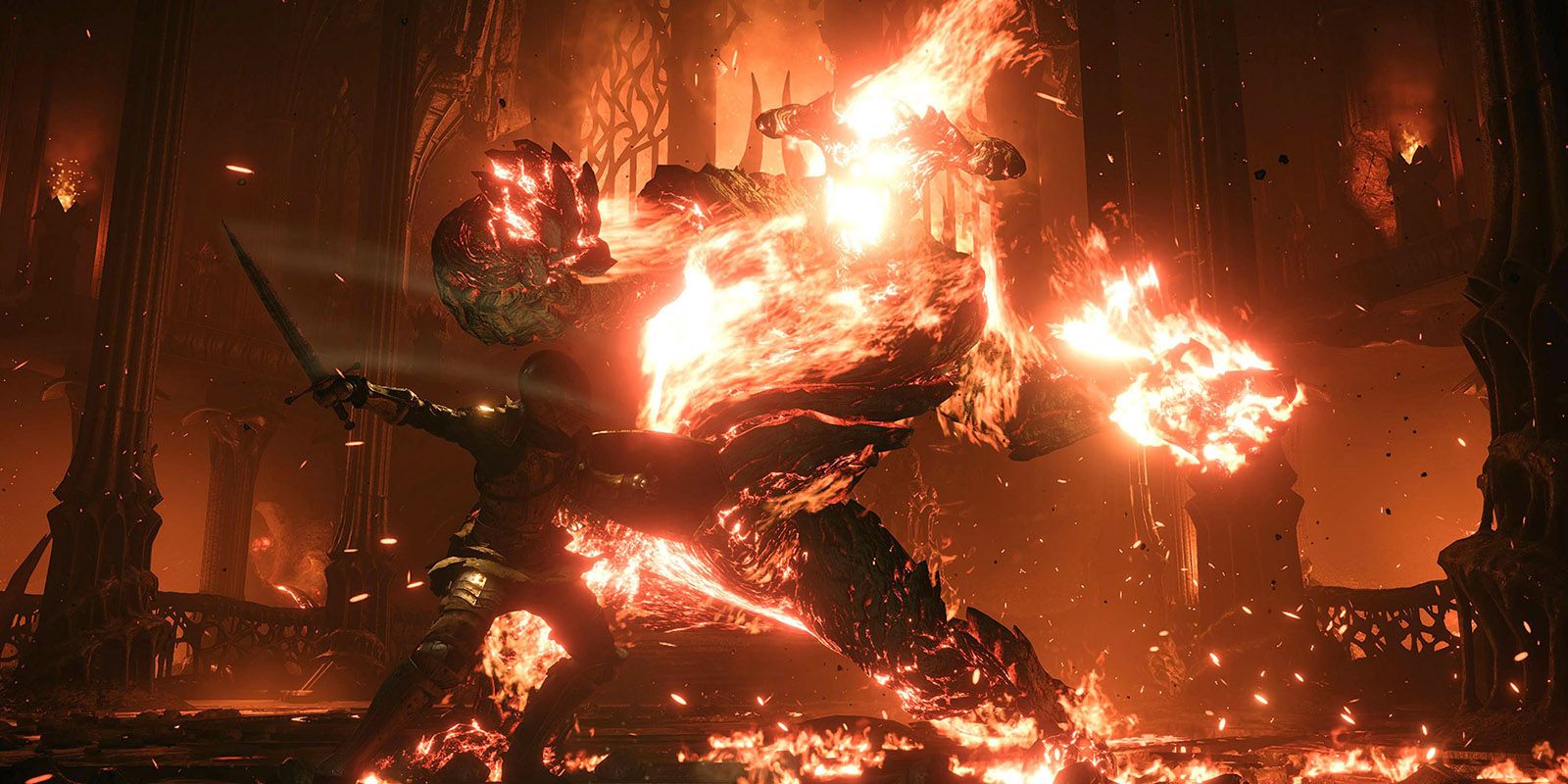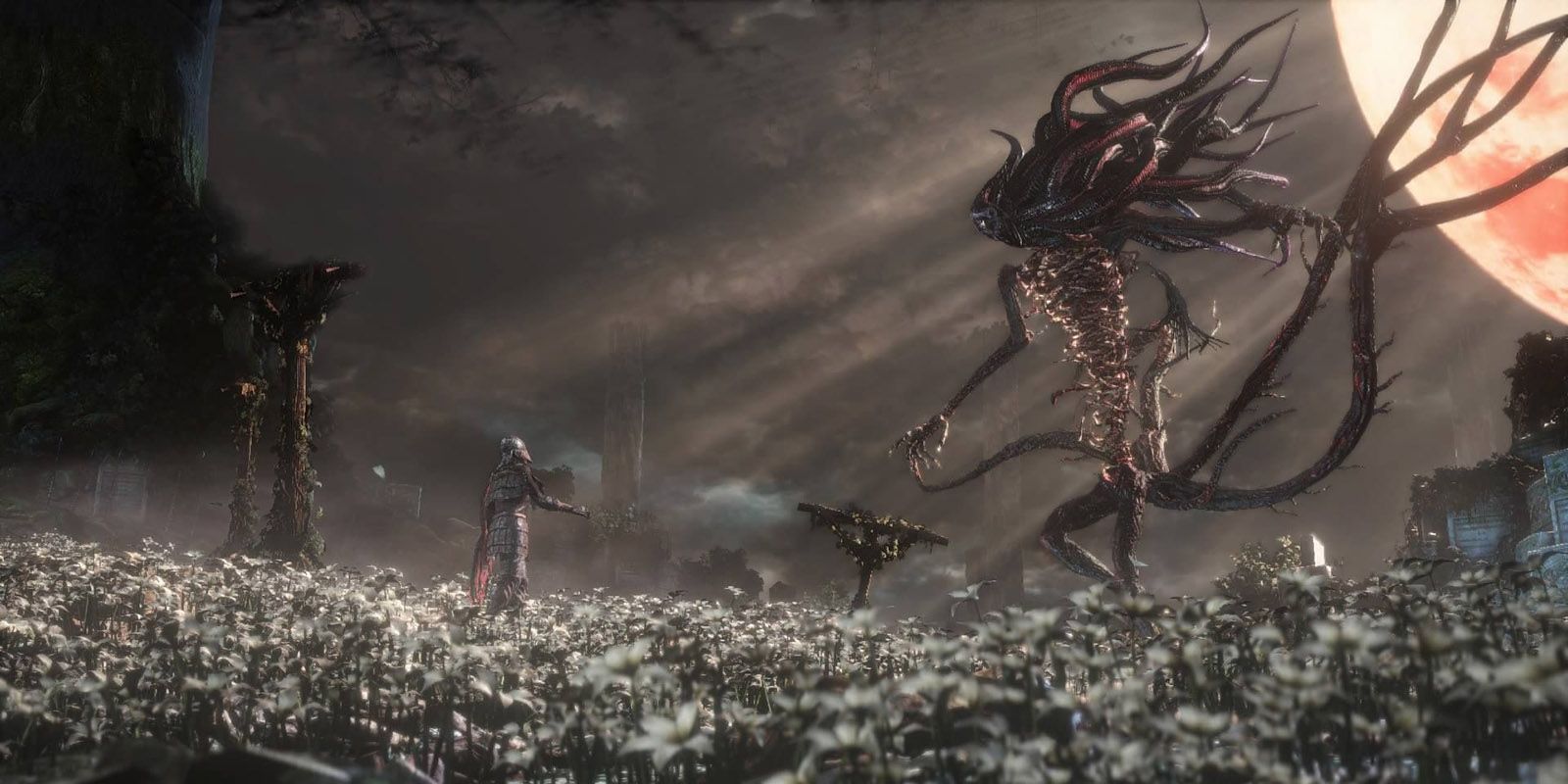Given the popularity of its games, FromSoftware felt it appropriate to remake its classic Demon’s Souls to occupy players while they wait for Elden Ring. Released on the PS5 and developed by Bluepoint Games, the remake provided the original game with a much-needed update and has been received well.
It’s also lead to some interesting comparisons with FromSoftware’s other popular game Bloodborne. At their core, both are darker, grittier games than the Dark Souls series. However, there is a lot that sets Bloodborne and Demon's Souls apart from each other, with both games presenting strong cases for being the superior release.
10 Demon’s Souls: Black & White Story
The story in Demon's Souls is much more black and white than the one in Bloodborne. The player can either align with the Maiden In Black to put the Old One back to sleep and save the world or they can ally with the Old One and feed its hunger through death and destruction.
Basically, the player can be the hero or the villain. Admittedly they are serving a demon with either choice, but one path leads to saving the lives of the city and the other sees them offering everyone’s souls up as sustenance.
9 Bloodborne: Grey Story
Bloodborne’s story tasks the player with making choices that aren’t clear-cut good or evil. The so-called good ending sees the player escaping the dream but leaving everyone else to endlessly suffer. The bad ending involves the player continuing the dream and the chaos, although with the goal of helping other Hunters escape. The secret ending has the player becoming an Old One with an unknown outcome.
No matter what the player does, someone is going to suffer as a result of their choices. The only thing the player has control over is their own fate.
8 Demon’s Souls: Slower Paced
Thanks to an overabundance of weapons and shields, the combat in Demon’s Souls is a bit more methodical. Players must approach each scenario tactfully. Combat is a series of blocks, attacks, and dodges in an attempt to find and exploit openings in the enemy’s defense.
As a result, Demon's Souls' combat is slower than Bloodborne's. While it comes down to personal taste, some players may prefer a traditional back and forth style of combat that emphasizes blocking.
7 Bloodborne: Aggressive Gameplay
The fast and aggressive playstyle of Bloodborne may be a better fit for some players. These enemies are almost always on the offensive and rarely provide opportunities for the player to exploit. If someone wants to attack, they have to create opportunities.
Blocking is out of the question and combat feels a bit more fluid as the player is almost constantly moving to either dodge or attack. It’s an engaging experience that makes battles feel like a terrifying dance.
6 Demon’s Souls: Branching Paths
Demon’s Souls' world is five areas separated by a single nexus. What’s interesting about this design is that the player is free to visit the worlds in any order they wish. It doesn’t matter if they climb the Tower of Latria or explore the Tunnel City, all roads lead to the Old One.
This provides players the freedom to experience the story in a way that makes sense and favors progress. Players that might struggle with the Shrine of Storms can save it for later when their skills improve, while others can knock it out earlier in a playthrough.
5 Bloodborne: Open World
Bloodborne may be relatively linear in progress, but its world is an open book waiting to be explored. There’s no need to travel back to a central hub to go somewhere else, the player merely needs to wander the dark alleys and slay the monsters to get there.
The Hunter’s Dream is a hub the player can use to fast travel anywhere, but it’s not required. Consequently, the world feels rich and immersive. Bloodborne also caters to exploration and secrets in a way Demon’s Souls can’t.
4 Demon’s Souls: Plethora Of Gear
There are a ton of things for players to collect during their quest to stop the Old One. There are dozens of weapons that can be found and purchased from swords to spears. This provides immense freedom to build and playstyles.
Finding better gear and specific items alone can be a rewarding experience. This aspect also improves the game's replayability as players can try tackling the evils of the world with bows in one attempt before switching to axes in another.
3 Bloodborne: Weapon Specialty
Bloodborne decided to forgo the plethora of items and loot in favor of a more concentrated collection of tools to wield. For instance, there are 26 trick weapons the player can obtain, each providing their own custom playstyle and are suited for different combat scenarios.
Admittedly 26 weapons may sound like a lot, but Demon’s Souls offers 18 classes of different weapons. With Bloodborne’s system, it’s more feasible to try every weapon style. More importantly, very few of these weapons are useless; in fact, even starter weapons like the Hunter’s Axe and Saw Cleaver remain viable throughout a playthrough.
2 Demon’s Souls: Dark Fantasy
Demon’s Souls tells a dark fantasy story. The player must contend with demons, dark magic, and the undead in an effort to save the world. There are castles, swords, sorcerers, knights, and various enemies that have been seen in abundance in gaming and other mediums.
The player is definitively the hero or the villain seeking to quell an ancient evil demon and save the realms. It’s a more familiar genre that players are largely accustomed to playing titles like The Witcher 3, Diablo, or Dark Souls.
1 Bloodborne: Lovecraftian
Bloodborne is inspired by Lovecraftian horror. The player is facing beings of unimaginable cosmic horror. Some can be defeated and others can’t. At no point is it exactly clear what their motives are or what they hope to accomplish.
It’s a unique subgenre that the average player is likely not experienced with. The story can be confusing, obscure, and intentionally vague. In Lovecraftian horror, there is usually no hope and the concept of good and evil is often meaningless.

